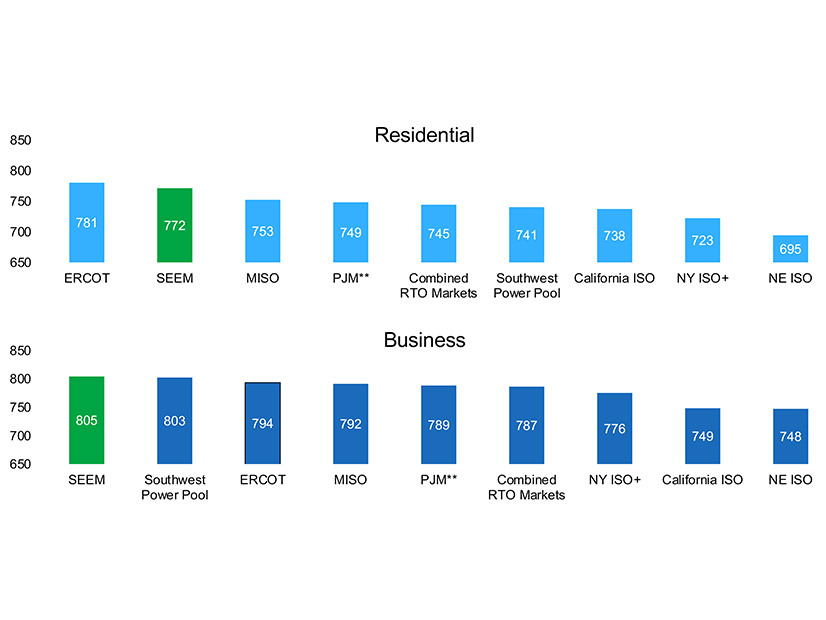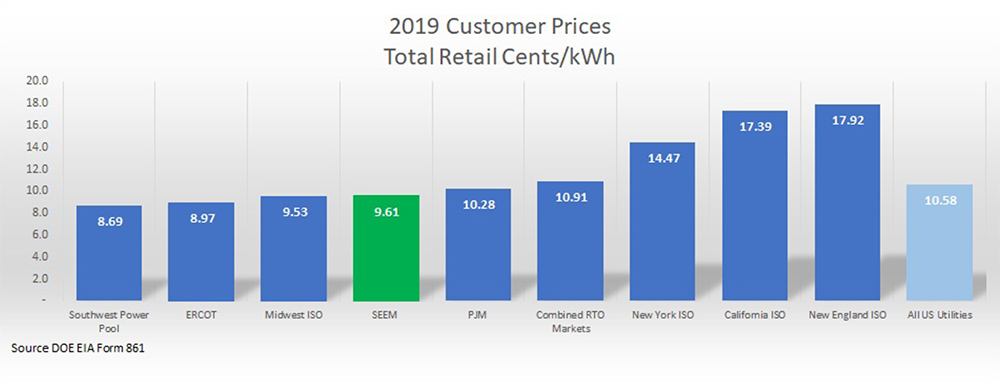
Opponents of the proposed Southeast Energy Exchange Market (SEEM) blasted the market’s supporters last month in a filing that sought to “clarify the record” while renewing calls for FERC to initiate a technical conference on energy market policy in the Southeast (ER21-1111, et al.).
The July 29 filing — by a group including the Sierra Club, Southern Alliance for Clean Energy, Georgia Conservation Voters, the North Carolina Sustainable Energy Association and the Natural Resources Defense Council, identifying themselves as “Public Interest Organizations” (PIO) — was in answer to an argument filed by SEEM’s sponsors two weeks earlier. (See Southeast Utilities Urge FERC Action on SEEM.) The sponsors themselves were responding in part to the PIOs’ original criticisms and call for a technical conference, filed in June. (See Clean Energy Groups Pan Southeast Utilities’ SEEM Proposal.)
While the PIOs acknowledged that FERC’s “procedural rules generally do not allow for answers to answers,” they said an additional filing was necessary because the SEEM sponsors “refuse to modify the proposal” beyond “tweaks around the edges” that fail to address the issues they have raised previously.
Following the PIOs’ filing, FERC staff on Friday issued a second deficiency letter with three questions, including a request for assurances that the SEEM administrator and auditor would be independent of members and their affiliates.
Staff asked how SEEM’s operating agreement would ensure that members cannot access competitors’ transmission function or commercially sensitive information through reports or information provided by the administrator or auditor.
They also asked about SEEM’s proposal to post confidential information to a dedicated confidential portion of its website to which designated employees would have access. They asked whether the availability of redacted documents posted to the confidential portion of the website would vary depending on the identity of the participant accessing the documents to avoid divulging commercially sensitive information to a participant’s competitors.
Serious Market Power Concerns
The complaints raised in the July 29 filing mainly echo those of the PIOs’ previous arguments against SEEM, which is intended to reduce friction in bilateral trading in 11 Southeastern states by introducing automation, eliminating transmission rate pancaking, and allowing 15-minute energy transactions. SEEM’s proponents, which comprise more than a dozen utilities and cooperatives including the Tennessee Valley Authority, Southern Co. and Duke Energy, also claim that the market would promote “better integration of diverse generation resources” such as wind and solar.
First on the PIOs’ list of issues with the proposal is the potential for transmission-owning utilities to “favor their own generated electricity and to exclude competitors from the market.” Though SEEM proponents assert that they have no intention of preventing access to transmission by competitors, the complainants said it is likely that SEEM participants will feel “an incentive to maintain their monopoly power at the expense of their customers.”

“Applicants’ blustery denials have done little to dispel the applicability of this fundamental principle of economics,” the PIOs said. “In fact, some applicants have used their considerable power to undermine efforts to introduce meaningful competition to the Southeast energy markets in ways that do little to allay PIO concerns regarding the potential for market power abuse in the proposed SEEM structure.”
The complainants cited “considerable efforts and questionable tactics” allegedly expended by Duke Energy to block a study on the impact of an energy bill in North Carolina backed by the utility. The bill, HB 951, originally included a provision that would examine the benefits of forming or joining an RTO, but according to a report from the Energy and Policy Institute, Duke worked with the North Carolina Utilities Commission to remove this language from the finished bill.
Potential for Discrimination
The PIOs also assert that the SEEM proposal “presents structural opportunities for undue discrimination,” as well as being inconsistent with open access transmission tariffs.
Pointing to the lack of a standardized enabling agreement in the SEEM rules, complainants said there is no guarantee that parties interested in participating in the market will “have rights to an enabling agreement.” While SEEM’s supporters have suggested that the 181 separate enabling agreements between proposed SEEM utilities show a robust network of trading partners, the PIOs replied that this only shows “some existing bilateral trading” between those members, not that others will be able to join on the same terms.
“Under other market structures and joint dispatch agreements, the commission has allowed some limitations on access to free transmission service to those with resources and/or loads located on the utilities’ systems,” the PIOs said. “However, at a minimum, those market structures provide imbalance service — that is, balancing loads and resources to meet needs reliably in real time. As applicants are fond of repeating, SEEM is not an energy imbalance market and has no imbalance or reliability requirements.”
No Action on Previous Complaints
In addition to these issues, the PIOs complained that SEEM proponents have “continuously failed to remedy” several points they have raised previously, including an alleged preference in the governance structure for transmission-owning members over participants, and the lack of an independent market monitor. Complainants said that “any one of these flaws” should be enough to torpedo the proposal, but that none have been addressed despite repeated attempts to raise supporters’ attention.
As a result, the PIOs urged FERC once again to reject the proposal and call a technical conference that would provide “an opportunity for meaningful stakeholder involvement.”
“Contrary to the applicants’ self-congratulatory claims, the existing bilateral energy market dominated by monopoly utilities is not working for families in the Southeast. And as explained in the PIO’s previous filings, SEEM will not help and may hurt,” the PIOs said. “A technical conference or joint regional meeting is a critical step towards a real solution that increases competition and lowers customer bills throughout the Southeast.”


